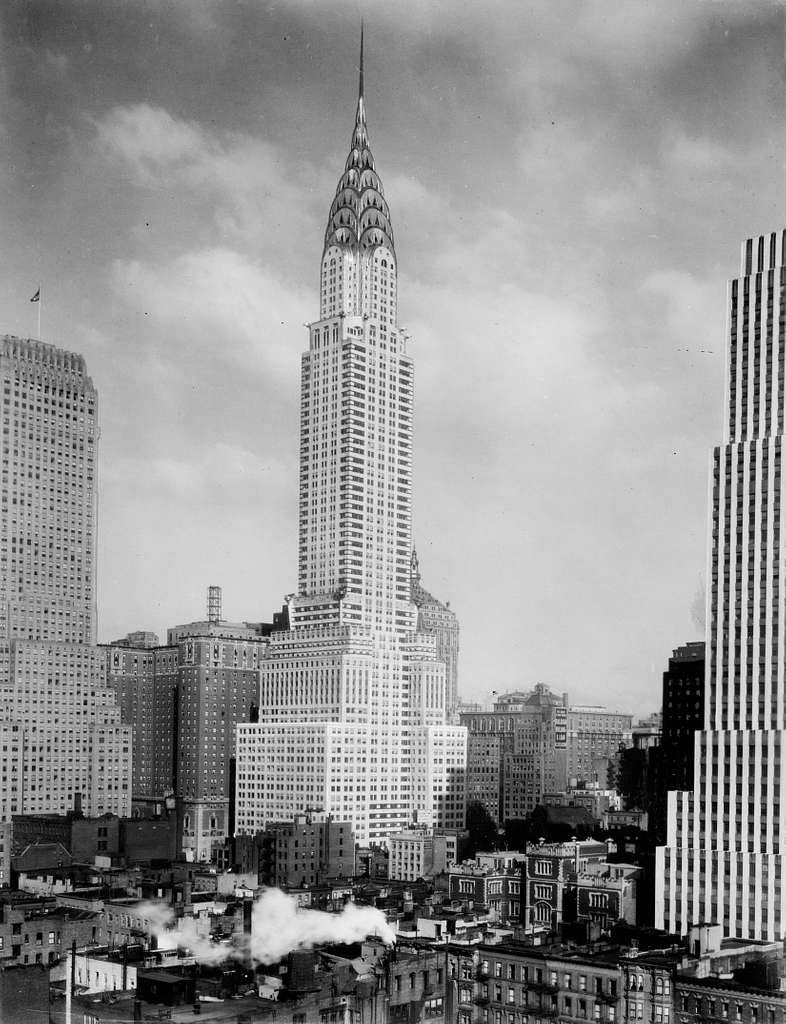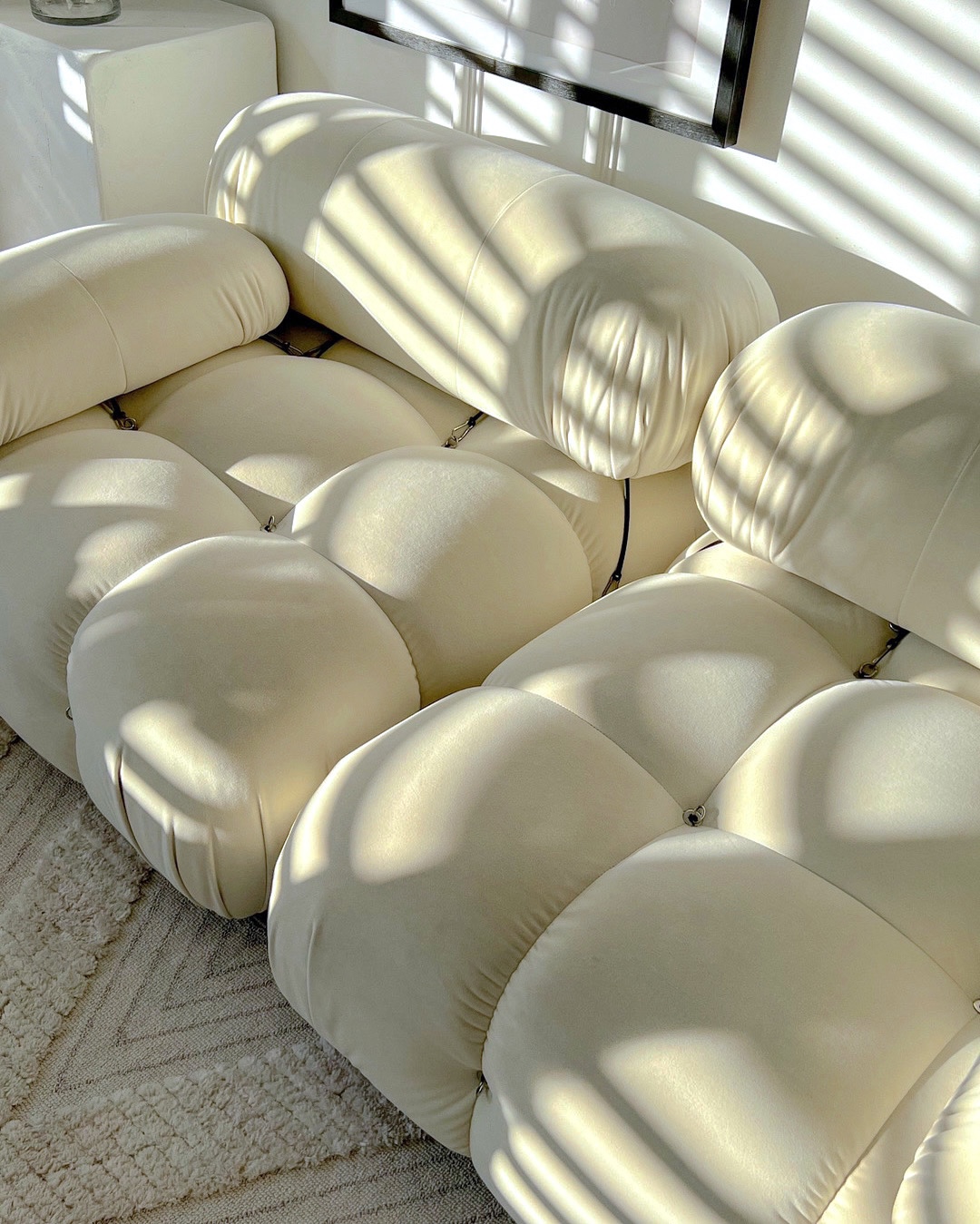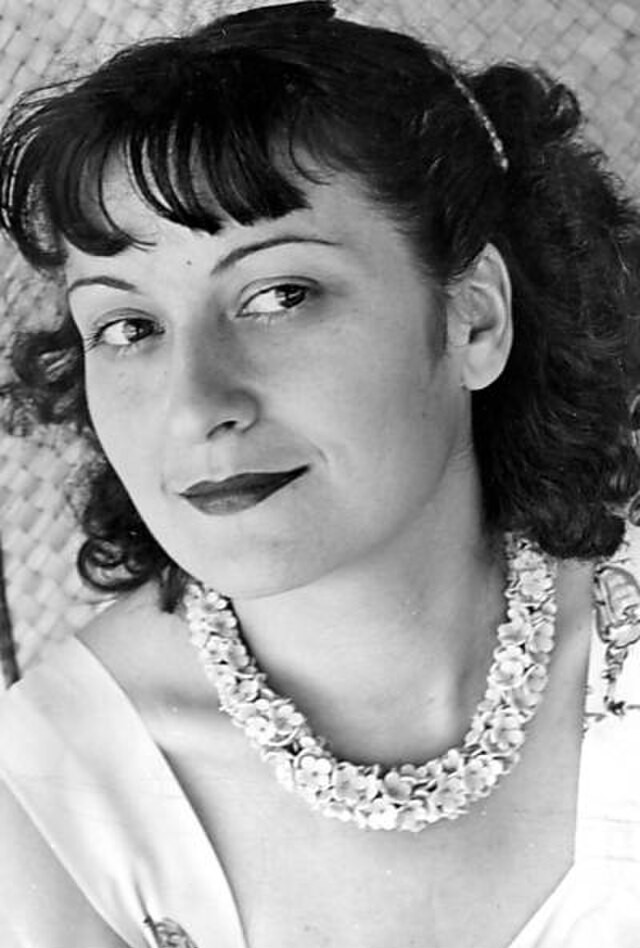
Chrysler Building, New York City.
Photo by unknown, via Library of Congress (Public Domain).
The 1920s, a decade forever etched in cultural memory, emerged as a vibrant, exhilarating period of societal transformation. Following the vast devastation of World War I, a palpable sense of liberation swept across the globe, igniting a fervent desire for a fresh start and a new aesthetic language to match. This era, often celebrated as the “Roaring Twenties,” was characterised by unprecedented economic prosperity and a burgeoning cultural revolution, where a newfound frivolity permeated society and morale soared to an all-time high. Amidst this effervescent atmosphere, Art Deco rose to prominence, becoming the quintessential visual expression of the age.
The Genesis of a Modern Style
The collective yearning for a forward-looking sensibility, coupled with a burgeoning sense of freedom, cultivated a demand for a design language that unequivocally symbolised modernity and progress. This marked a clear break from the austerity of the preceding wartime years and the more organic, historically inflected echoes of Art Nouveau. The newfound affluence and lessened financial burdens meant a rapidly expanding middle class could not only afford but actively desired luxury and indulgence, seeking out both individually crafted pieces and stylish mass-produced items that still conveyed sophistication. This suggests that Art Deco was less an isolated artistic evolution and more a direct, visual manifestation of a specific socio-economic and cultural zeitgeist, serving as an anthem to an era of optimism and burgeoning consumerism. The style’s inherent glamour and opulence were not arbitrary stylistic choices but a direct aesthetic response to, and reflection of, the societal aspirations and newfound wealth of the time, firmly embedding the style within the very identity of the era.
While its defining characteristics began to emerge in France in the mid-to-late 1910s, Art Deco truly came to fruition and gained its global nomenclature at the seminal 1925 Exposition Internationale des Arts Décoratifs et Industriels Modernes in Paris. Originally known as “style moderne” or “Jazz Moderne,” this pivotal exhibition served as its grand unveiling, showcasing the latest forms of decorative and industrial design and marking a decisive departure from the ornate, heavily embellished styles of the past. From Paris, the style rapidly disseminated across Europe and the United States, becoming a dominant force in design throughout the 1920s and 1930s. Its widespread adoption was fuelled by a growing post-war middle class with increasing access to consumer goods, though its opulent expression would later be curtailed by the austerity of the Great Depression.
Art Deco positioned itself as both a successor to and a deliberate reaction against Art Nouveau, the prevailing style of the late 19th and early 20th centuries. Art Nouveau, characterised by its sinuous lines and flowing organic shapes based on plant forms, represented a different sensibility, one rooted in naturalistic curves and historical imitations. In contrast, Art Deco embraced a more fragmented, geometric character, a conscious attempt to create a new style, free of the imitative historicism that had defined much of the preceding century’s design. This clear departure marked a new chapter in aesthetic expression. The widespread influence of Art Deco across diverse disciplines—architecture, interiors, furniture, industrial design, transport, fashion, and graphics—led to its description as a “total style.” This extensive reach meant it functioned as a powerful, unspoken cultural declaration for a newly interconnected, globalised world. The SS Normandie, for instance, was explicitly commissioned to serve as an ambassador, carrying the art and glory of France to foreign lands, showcasing the style’s deliberate role in projecting national identity and modernity. Art Deco’s ubiquity across various creative and industrial fields was not coincidental but a testament to its compelling symbolic resonance, allowing it to act as a universal visual shorthand for progress, sophistication, and a forward-looking ethos on an international scale.
The Architectural Language: Geometry, Line, and Form
At the heart of Art Deco’s aesthetic lies a wholehearted embrace of geometry, a direct inheritance from the avant-garde movements of the early 20th century. The main difference from Art Nouveau is precisely the influence of Cubism, which imparted a fragmented, geometric character to the style. This intellectual lineage, further reinforced by influences from Futurism and Constructivism, translated into a consistent use of sharp angles, straight lines, and symmetrical patterns. Iconic motifs such as zigzags, triangles, and sunbursts became staples of the style, alongside chevrons and V-shaped patterns. Cubism’s fragmented and abstract forms directly inspired Art Deco’s clean lines and structured designs.
Art Deco was deeply enamoured with the emerging machine age, reflecting a genuine admiration for the modernity of the machine and for the inherent design qualities of machine-made objects. This fascination manifested in the characteristic streamlined look and the incorporation of smooth symmetrical curves and lines. These aerodynamic forms were explicitly inspired by the speedy aerodynamics of ocean liners, trains, motor cars, and airplanes, celebrating speed, technology, and the excitement of the machine age. The use of industrial materials like steel, concrete, and stucco was not merely structural but often showcased as the ‘main act,’ embodying the era’s technological advancements.
A defining characteristic of Art Deco is its strong emphasis on symmetry, balance, and order. Designs frequently featured balanced layouts and elements arranged in harmonious compositions, creating an all-encompassing sense of order. This deliberate symmetry marked a clear departure from the more asymmetrical and organic designs of previous styles, reflecting a modernist belief in rationality and logic. Furthermore, Art Deco architecture and design often exhibited a pronounced vertical emphasis, with tall buildings, slender columns, and stepped forms evoking a sense of upward movement and aspiration. The skyscraper, particularly in cities like New York, became synonymous with Art Deco, with iconic structures like the Chrysler Building and Empire State Building standing as powerful symbols of the city’s newfound commercialism and sophistication.
A compelling aspect of Art Deco is its simultaneous embrace of the machine age and lavish ornamentation. The style is consistently lauded for its embrace of technological advancements, leading to streamlined forms and the prominent use of industrial materials such as steel and chrome. Yet, concurrently, the style is equally defined by its rich decorative motifs and lavish ornamentation. This reveals a fascinating synthesis: a design movement that championed industrial efficiency and mechanical simplicity simultaneously revelled in elaborate, often meticulously handcrafted, embellishment. The integration of stylised representations of natural elements alongside explicit mechanical motifs and geometric patterns suggests a sophisticated blending rather than a wholesale adoption of industrial minimalism. Unlike later, more austere Modernist movements that sought to eliminate ornament entirely, Art Deco reimagined it through a modern, geometric lens, frequently applying it to novel materials or forms. This approach forged a unique aesthetic that adeptly bridged the gap between traditional artistry and industrial progress, offering a more accessible and palatable form of modernism to a public still deeply rooted in decorative traditions.
The style’s architectural language, particularly its pronounced verticality, directly mirrored the urban boom and the aspirational spirit of the era. The emphasis on Art Deco’s vertical ascent and its indelible link to the skyscraper, especially within the burgeoning urban landscape of New York City, is not merely about architectural form; it delves into potent symbolism. The fast-paced, cosmopolitan lifestyle of the urban elite and the broader trend of increased urbanisation created a palpable demand for modern and forward-thinking design. Skyscrapers like the iconic Chrysler Building thus became more than just tall structures; they were potent symbols of the city’s newfound commercialism and sophistication. This indicates a symbiotic relationship between Art Deco’s verticality and the ambitious spirit of urban centres, where design served as a tangible representation of economic power, persistent progress, and a soaring sense of collective optimism. Even within residential interiors, elements such as tall floor lamps or thin vertical wall panels subtly echoed this upward gaze, effectively bringing the monumental grandeur of the skyscraper into the more intimate domestic realm.
A Canvas of Riches: Materials, Colours, and Textures
The very essence of Art Deco’s allure lay in its unapologetic embrace of luxurious materials. This opulence was rooted in the use of exotic woods such as ebony, mahogany, walnut, and Macassar Ebony, often highly polished to enhance their natural grain. Marble, frequently in striking black and white geometric or chevron patterns, served as a foundational material for floors, walls, and surfaces. Precious metals like gold and silver were liberally applied as accents, inlays, and finishes. Further enhancing this richness were delicate inlays of ivory and mother-of-pearl, and unique textures like shagreen and tortoiseshell.
Complementing these traditional luxuries, Art Deco fearlessly incorporated manufactured materials, signifying its embrace of industrial modernity. Chrome and stainless steel brought a sleek, futuristic gleam. Glass, often frosted or used in mirrored surfaces, amplified light and created illusions of space. Lacquer, known for its high-gloss, ultra-polished look, provided a sophisticated, reflective finish, particularly in rich hues. Brass, polished steel, and aluminium further contributed to the metallic sheen that became a hallmark of the style.
The Art Deco material palette, frequently described as luxurious and opulent, reveals a fundamental redefinition of luxury. It is a luxury that embraces both the heritage of traditional craftsmanship and the gleaming, futuristic promise of the machine age. The explicit mention of these materials being considered premier at the time further underscores the era’s fascination with novelty and progress. This interplay between materials and the creation of striking contrasts generated a dynamic visual tension, a unique aesthetic that distinctly set Art Deco apart from the singular material focuses of previous design movements. Art Deco redefined luxury by seamlessly integrating traditional exoticism with industrial modernity. This blend reflected a society eager to embrace the future while simultaneously valuing richness and meticulous craftsmanship, thereby offering a sophisticated and highly aspirational aesthetic.
The tactile experience of Art Deco interiors was equally rich, featuring sumptuous textiles such as velvet, silk, satin, and leather used in upholstery, drapery, and cushions. These fabrics, with their inherent sheen and luxurious drape, contributed considerably to the opulent feel. The colour palette was bold and vibrant, a striking departure from previous decades. Rich jewel tones like emerald green, ruby red, and sapphire blue were predominant, often contrasted with sophisticated neutrals like black, white, gold, and silver to enhance the feeling of luxury and drama. The consistent emphasis on these bold hues is not merely a stylistic choice; it carries deeper meaning. The explicit mention of moving away from the subdued colours of previous decades directly correlates this shift with the energy of the Jazz Age. This indicates that colour was employed not just for its visual impact but as a compelling emotional expression of the era’s exuberance and profound optimism. The strategic pairing of these vibrant hues with sophisticated neutrals served to amplify the feeling of luxury and drama. This bold, high-contrast palette functioned as a clear visual cue for the era’s newfound confidence and a desire for overt display, making interiors feel opulent and full of life. Art Deco’s distinctive colour palette represented a deliberate break from historical precedents, serving as a vibrant, dramatic expression of the era’s post-war exuberance and functioning as a clear, unmistakable marker of wealth and sophisticated social standing.
Interiors as Expressions: Crafting the Art Deco Space
Art Deco furniture was designed to be both functional and truly artistic, characterised by sleek, streamlined forms and often a sophisticated blend of materials like wood, leather, and metal. Pieces frequently featured decorative inlays and finishes, with sleek, angular designs and curved silhouettes often highlighted by metallic framing. Luxurious fabrics like velvet or leather were common for upholstery, often combined with inlays or lacquered finishes to create focal points. Iconic pieces include the club chair, known for its deep seat, curved arms, and luxurious leather upholstery, symbolising comfort and sophistication. Sideboards and credenzas, with their bold lines, rich veneers, and often inlaid with exotic woods or metallic accents, served as focal points in dining and living spaces. Paul Frankl’s “Skyscraper” furniture series directly translated architectural forms into domestic pieces. Eileen Gray’s pioneering designs, such as the Bibendum Chair (with its unique tyre-like shapes on a chromed steel frame) and the Pirogue Day Bed, evolved from early uses of exotic woods and furs to simpler, more industrial forms.
Lighting in Art Deco interiors transcended mere utility, functioning as dramatic art pieces. Fixtures were crafted from materials like glass and chrome and often incorporated the signature geometric shapes of the era. Chandeliers, sconces, and table lamps featured intricate details and luxurious finishes, often in polished brass, chrome, frosted glass, and crystal. Designers like René Lalique created iconic glass car mascots and architectural glass panels, demonstrating the style’s widespread reach. The SS Normandie famously integrated electric lighting into an architectural structure, earning it the moniker “Ship of Light” due to the dazzling interplay of light and reflective surfaces.
Mirrors were indispensable, used not only for their reflective qualities but also as decorative elements that added dimension, brightness, and luxury. Large mirrors with intricate frames and mirrored and lacquered finishes enhanced opulence and created illusions of grandeur, making rooms appear larger and more luminous. The sunburst mirror became an iconic motif. Decorative accessories, including sculptures, vases, and ornamental objects, often drew inspiration from global cultures, such as ancient Egyptian, Aztec, and African art, reflecting the era’s fascination with the exotic. Even elements like animal print rugs or throws were incorporated, adding a touch of bold, tasteful flair.
The consistent description of Art Deco interiors as meticulously curated environments, rather than merely functional spaces, is a telling detail. The emphasis on statement pieces, dramatic art pieces for lighting, and the prevalent use of reflective surfaces all contribute to an atmosphere of theatricality and grandeur, repeatedly characterised as glamour. When viewed through the lens of the “Roaring Twenties” context, these interiors become stages for a new, liberated lifestyle, where entertaining guests was a central social ritual. The incorporation of globally inspired motifs from ancient Egyptian, Aztec, and African art further underscores a worldly, sophisticated taste. This analysis delves into the compelling social function of the Art Deco interior as a deliberate projection of the owner’s status, their embrace of modernity, and their participation in the era’s vibrant cultural life. Art Deco interiors were intentionally designed as immersive environments that communicated wealth, sophistication, and a forward-looking sensibility. They served not only as private sanctuaries but also as public declarations of a new cultural identity, reflecting the dynamism and aspirations of the Jazz Age.
From Private Sanctuaries to Public Spectacles: Residential and Commercial Masterpieces
The opulent and decadent aesthetic of Art Deco is perhaps best captured in the mental image of what Art Deco rooms look like from The Great Gatsby. Masters like Emile Jaques Ruhlmann created high-end, handcrafted interiors with elegant lines and exotic wood veneers, referring to his most exquisite works as precious pieces. Notable examples include Sir Edward Maufe’s shimmering writing desk and the daring “Scandal Relief” by Charles Sargeant Jagger for Henry Mond’s drawing room at Mulberry House. Eileen Gray’s Rue de Lota apartment was hailed as the epitome of Art Deco, blending modern sensibilities with an appreciation for the antique. Beyond the elite, the affordability of designs by figures like John Rattenbury Skeaping and Eric Slater’s ‘Vogue’ tea sets allowed the Art Deco aesthetic to permeate more modest middle-class homes. Donald Deskey’s apartment for Adam Gimbel, featuring cork walls, a copper ceiling, linoleum floor, pigskin chairs, and metal trim, showcased a bold mixing of materials.
Art Deco left an indelible mark on public spaces, transforming them into grand spectacles. The lobby of the Chrysler Building in New York City stands as a pinnacle, dazzling with African mahogany panelling and marble and onyx floors and walls, crowned by a spectacular ceiling mural with abstract geometric patterns and ornamental motifs in silver and gold leaf. The Palais de Chaillot in Paris, built for the 1937 World’s Fair, featured symmetrical designs adorned with detailed marble inlays and expansive decorative panels. The ill-fated ocean liner SS Normandie was considered the ultimate ocean liner, a floating museum of lavish Art Deco interiors. Its first-class dining hall, famously longer than the Hall of Mirrors at Versailles, featured light fixtures by René Lalique, furniture by Émile-Jacques Ruhlmann, and gilded glass murals by Jean Dupas. Other iconic commercial spaces include New York City’s Rockefeller Center (interiors supervised by Donald Deskey), the Empire State Building, grand movie theatres like the Paramount Theatre in Oakland and Radio City Music Hall in NYC, and the vibrant hotels of Miami Beach such as the Breakwater Hotel, The Tides Hotel, and The Colony Hotel.
The research consistently reveals a fascinating dichotomy within Art Deco’s application. On one hand, there is a clear emphasis on bespoke one-offs for the wealthy few by masters like Ruhlmann, who employed high-end, handcrafted techniques to create precious pieces. This highlights the style’s genesis in luxury and artisanal excellence. On the other hand, the research also points to mass-produced wares and the style’s accessibility that allowed its aesthetic to enter more modest middle-class homes. This duality is central to understanding Art Deco’s widespread influence. While its origins were firmly rooted in exclusivity, its inherent geometric forms and machine-age influences made it remarkably adaptable for industrial production, allowing it to become a dominant force far beyond the elite. The demand for inexpensive consumer goods increased, accelerating a move away from handcraft practice towards a modern aesthetic compatible with new materials and industrial production explicitly states this shift. This demonstrates Art Deco’s exceptional versatility and its pivotal role in making modern design more accessible, even as it simultaneously maintained its image of unparalleled luxury at the highest echelons. Art Deco was unique in its capacity to simultaneously cater to the ultra-wealthy with bespoke, handcrafted masterpieces and to the burgeoning middle class with stylish, mass-produced items. This dual approach allowed it to spread its distinctive influence across virtually all societal strata, making it a truly widespread and transformative design movement.In Australia, the Art Deco style found a welcome home, reflecting the nation’s own aspirations for modernity and progress during the inter-war period. Its influence permeated both residential and public spaces, albeit often with a slightly localised flavour.
In Australian homes, Art Deco manifested through sleek, minimalist forms in furniture, geometric patterns in leadlight windows and ceiling roses, and the use of rich, dark timbers contrasting with lighter walls. Fireplace surrounds frequently featured stepped motifs, and bathrooms sometimes incorporated coloured tiles in characteristic Art Deco palettes. Public architecture, particularly in major cities like Sydney and Melbourne, saw the rise of magnificent Art Deco structures such from cinemas and hotels to commercial buildings, often characterised by their bold verticality, geometric ornamentation, and use of brick, concrete, and terracotta. Notable examples include the Grace Building in Sydney and the Manchester Unity Building in Melbourne. Today, this influence lingers in the preservation of these iconic buildings, which continue to capture the public imagination, and in contemporary design, where subtle nods to Art Deco’s streamlined forms, luxurious materials, and geometric flair can still be observed in boutique hotels, bars, and residential interiors, speaking to its lasting appeal on Australian shores.
Art Deco’s Timeless Allure
Despite its relatively short reign, curtailed by economic shifts and the looming shadow of war, Art Deco’s timeless elegance and striking aesthetic have ensured its sustained appeal. Its influence is demonstrably seen in contemporary design, architecture, and fashion, experiencing a notable resurgence of interest in recent years. Modern structures, from skyscrapers and hotels to residential buildings, continue to incorporate Art Deco elements, paying homage to its glamour. The concept of “New Deco” sees a reinterpretation, featuring the characteristic geometric shapes, jewel tones, metallics, and lavish textiles, but often blending vintage glamour with contemporary simplicity. Even postmodern designers of the 1980s and 90s, such as the Memphis Group, drew inspiration from its stylised geometric forms. The principles championed by designers like Eileen Gray—innovative use of materials, user-centric design, and adaptability—continue to inspire modern product designers. This cyclical nature of design aesthetics ensures that Art Deco, with its unique blend of historical consequence and modern desires, remains a potent source of inspiration, allowing for its continuous reinterpretation in our increasingly digital world.
The lasting appeal of Art Deco lies in its unique ability to reconcile the desire for glamour and ornamentation with the demands of modern functionality and streamlined design. The research consistently highlights Art Deco’s inherent capacity to marry beauty and functionality, creating spaces that are as practical as they are visually striking. This synthesis is central to its lasting legacy. Even during the economic hardship of the Great Depression, the style demonstrated its adaptability by shifting towards simplicity and functionality over opulence, a pragmatic evolution that aligned with the emerging utilitarian philosophies of the Bauhaus. Art Deco’s sustained appeal and perceived timelessness are directly attributed to this unique balance. The contemporary “Modern Art Deco” trend explicitly aims to balance the opulence of Art Deco with clean, streamlined design principles for a sophisticated look. This indicates that Art Deco’s lasting relevance stems not just from its aesthetic appeal, but from its inherent capacity to reconcile decorative richness with a modern sensibility for utility, making it perpetually valuable in a world that increasingly demands both form and function.
A Legacy of Modernity and Allure
The Art Deco decade, the vibrant 1920s, ushered in a design movement that was far more than a mere aesthetic trend; it was a compelling cultural phenomenon, a direct reflection of a society rebounding from war with renewed optimism and a fervent embrace of modernity. Born from the ferment of post-WWI liberation and economic prosperity, Art Deco provided the perfect visual vocabulary for the “Roaring Twenties,” symbolising a new era of progress, luxury, and sophisticated indulgence.
Its distinctive language, rooted in the geometric abstraction of Cubism and the sleek dynamism of the Machine Age, offered a bold departure from the organic curves of Art Nouveau. This led to an architectural and interior style characterised by sharp angles, streamlined forms, and a pronounced verticality that mirrored the soaring ambitions of urban centres. What made Art Deco truly unique was its clever ability to marry opulent ornamentation with industrial materials, creating a “new luxury” that celebrated both traditional craftsmanship and technological advancement. The daring palette of jewel tones, contrasted with gleaming metallics and rich textures, further amplified its dramatic and glamorous appeal.
From the bespoke, handcrafted interiors of the elite to the stylish, mass-produced items that permeated middle-class homes, Art Deco demonstrated an unparalleled versatility, becoming a widespread force across all societal strata. Its iconic spaces, from the grand lobbies of New York’s skyscrapers to the lavish dining halls of transatlantic ocean liners, were meticulously curated environments, designed to be immersive experiences that projected status and a forward-looking sensibility.
Ultimately, Art Deco’s lasting allure lies in its inherent capacity to bridge seemingly disparate worlds: the decorative and the functional, the traditional and the modern, the opulent and the accessible. This lasting synthesis has ensured its timeless relevance, inspiring contemporary designers to continually reinterpret its principles and infuse modern spaces with its distinctive blend of geometry, glamour, and an unwavering spirit of progress. The symphony of the Art Deco decade continues to resonate, a testament to its powerful and lasting legacy in the realm of design.
Further Reading
Duncan, Alastair. Art Deco Style: Great Designers & Collectors. ACC Art Books, 2024.
Duncan, Alastair. Art Deco Complete: The Definitive Guide to the Decorative Arts of the 1920s and 1930s. Abrams, 2009.
Nash, Eric P. New York Art Deco: Birds, Beasts & Blooms. Rizzoli, 2023.
Hillier, Bevis. Art Deco of the 20s and 30s. Independently published, 2024.
Schwartzman, Arnold. Art Deco: The Twentieth Century’s Iconic Decorative Style. Rizzoli, 2019.



